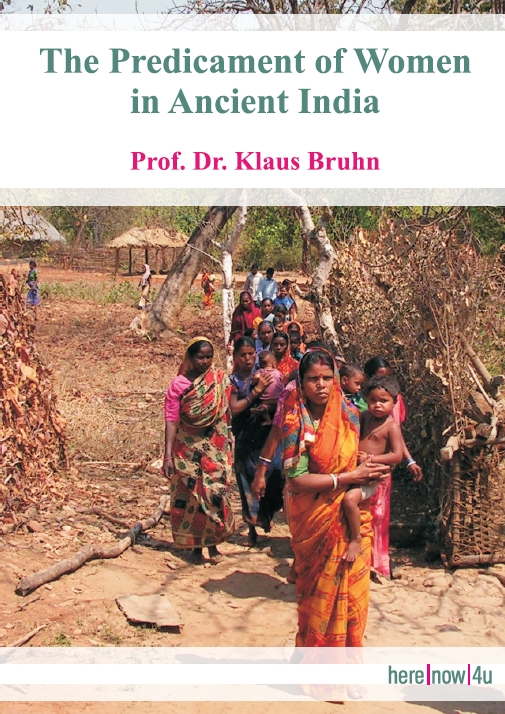We mention the quotations (mainly ALTEKAR 250-270) as an introduction to a complex subject. Refer for further information to JOLLY 85-86, 87-89; and to SONTHEIMER Chapters 3, 6 (iv) and 7(iii-iv).
We begin with a few words on female property.
The property of a woman is stri-dhana (stri = wife, dhana = property). DERRETT 185. There was an old view that women had no property, they were property (Manu 8.416; ALTEKAR 219).
Manu 8.416. Wife, son, and slave -- all these three, tradition tells us, are without property. Whatever they may earn becomes the property of the man to whom they belong.
But "It was only with reference to immoveable property that Hindu society was for a long time unwilling to invest the wife with full or exclusive ownership.... As far as moveable property like ornaments, jewelry, costly apparel, etc. was concerned, women's right to own it was recognized at a very early date. All this property went under the category of Stridhana or Women's Special Property. The story of its development is a very interesting chapter in the history of Hindu law." (ALTEKAR 217). Moreover: "From about the 7th century A.D., we find a general tendency to enlarge the scope of Stridhana." (ALTEKAR 221). Refer for stri-dhana to ALTEKAR 212-233.
It would appear that in ancient times the widows simply remarried (mostly niyoga). "Very often they used to [re]marry, and so the question of giving them a share in their dead husband's property would not arise at all. The refusal to recognize the widow as an heir to her husband was thus causing not much actual hardship in society." (ALTEKAR 250) "We therefore find that down to c.300 B.C., the right of the widow to inherit her husband's property was not recognized by any jurist." (ALTEKAR 251)
The change began "at about the beginning of the Christian era." (ALTEKAR 252) The same time which reduced the life of the widow to penances proved charitable in other respects. Since the widow could no longer marry again or submit to niyoga, the widow's claims had to be redefined.
The recognition of the widow's right was a slow progress. There were limitations (only maintenance allowance for the widow, only moveable property devolving upon the widow, only a limited maximum amount of money to be given to the widow). ALTEKAR points to the coexistence of an orthodox and a liberal school or line since early days. "The school of reformers... insisted that the widow's right to inherit the full share should be recognized." (255) This was an important innovation.
Well known is the difference between Mitakshara (a law-book, 11th-12th c.) and Dayabhaga (part of another law-book, 11th c. or later). We quote a description of the main tenets of the two schools. "Among Hindus, the economic status of the widow was governed by one of the two legal schools which determined the laws of the division of assets and inheritance -- the Dayabhaga and the Mitakshara. The Dayabhaga school, operative in Bengal, strongly favoured the individual's right to inherit and dispose of ancestral property without restrictions from the joint family. It also held that even in an undivided family, the widow succeeded to her husband's share on his death, provided he left no male heir... The Mitakshara school, prevalent in other parts of northern India, held that only male descendants -- sons, grandsons or great grandsons -- acquired by birth the right to ancestral property. Women did not have a share in such property and a widow without sons was entirely dependent on the joint family for maintenance." (SOGANI 30-31) As just stated, both rules apply only if the widow has no sons. ALTEKAR writes: "The Hindu Women's Right to Property Act of 1937 extends the Dayabhaga principle to the whole of British India, and invests the widow with the right to inherit her husband's share in the family property..." (270).
While the Dayabhaga rule was in favour of the widow as the heir of the deceased husband's property, the Mitakshara school granted her only a maintenance allowance. Under these circumstances it seemed natural that many Dayabhaga widows were asked to commit suttee to secure for the husband's family the fortune of the dead testator. Such a derivation of above-average suttees from Dayabhaga is, however, not supported by the facts (FISCH 280-281). There were (in Bengal) no especially high suttee figures in Dayabhaga districts and no especially low suttee figures in Mitakshara districts, and there were also other reasons which did not support the derivation.
ALTEKAR mentions inter alia the following instances of heritage: "A 13th century inscription from Madura district narrates how two childless widows wanted to give a garden to a temple, how their relations would not sanction the transaction, and how eventually they could achieve their object only by securing the permission of some other reversioners..." (ALTEKAR 266). ALTEKAR adds: "There are, however, other records, equally numerous and hailing from the same part of the country, which record sales or gifts of landed property by widows made for religious purposes, but which are silent about any permission of the reversioners." (ALTEKAR 266).
ALTEKAR continues "... a 15th century record mentions a Brahmana widow building a temple and giving to it a gift of land for the spiritual benefit of herself and her husband; a 17th century inscription describes how a Brahmana lady gifted away a whole village to a temple." (ALTEKAR 266). A 12th century inscription from Tanjore district "declares that a lawfully wedded wife inherits the whole property of the husband, including land, cattle, slaves, jewels and other valuables." (ALTEKAR 258). The donation of temples and sanctuaries by widows is not unusual.
 Prof. Dr. Klaus Bruhn
Prof. Dr. Klaus Bruhn
 Title Photo Background:
Title Photo Background: